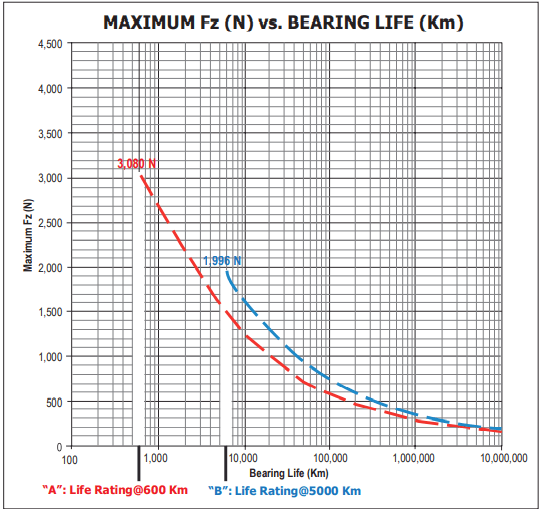Select the right linear actuator: Making sense of manufacturer specifications
In the world of electromechanical linear actuators, a product that has the “highest” output rating, whether it is loads, moments, or thrust can be a distinct competitive advantage. When selecting the proper actuator for an application, the product that has the “highest” rating is often determined to be the superior, robust choice. However, how long the actuator performs is what really counts.
How do you compare manufacturer’s published specification ratings so you can make a meaningful comparison? It’s all about life…and load. In order to compare components, the specification values need to be normalized to the rated life of travel the actuator is capable of when external forces are applied. The resulting data is evaluated in the same units of measure.
Most manufacturers supply performance guidelines based on life ratings of the components and actual test results. The performance ratings may take into consideration maximum allowable force, speed, load, acceleration, deceleration, loading due to impact, temperature, or in the case of off-set loading, bending moments. In many cases, all of these ratings can be applied to the actuator. The published ratings should be used as guidelines to ensure the actuator is used safely and can achieve maximum service life for its application.
Intended useful life has a significant influence on the rating when maximum loads are applied to rolling elements such as ball bearings, ball screws or linear guide bearings. These rolling elements are rated using the (fatigue) L10 life analysis. L10 refers to the number of hours, revolutions or (in the case of a linear guide system), travel distance reached by 90% of a group of rolling element bearings subjected to the same loads before the onset of fatigue. That means that 10% of this same group can be expected to show signs of fatigue before the L10 life is reached. This rating system has proven to be quite reliable and predictable when evaluating the life of rolling element bearing capacities even though the “average” life of these systems can typically be much higher.
The life vs. load relationship needs to be evaluated based upon the desired result of application demands. For example, an application requiring a higher load would be expected to reduce the life of the bearing system. Inversely, an application requiring a lower load would be expected to extend the life of the bearing system. In the case of a linear actuator employing a ball screw or a linear ball bearing, the applied load must be considered along with the bearing life rating in order to make an accurate competitive comparison.
In the example below, which actuator is more robust and best suited for the application: Manufacturer “A” with a maximum load capacity of 3,080 N (692.4 lbs) and a 50% greater load capacity or manufacturer “B” with a maximum capacity of 1,996 N (448.7 lbs)?

Based only on the highest value, it appears to be manufacturer “A.” However, additional investigation reveals what the load rating really means. Since load ratings are to be based on the L10 life of bearing travel, we need to determine the distance of travel for which the maximum loads are rated.
The second chart indicates that the product from manufacturer “A” has a life rating based on 600 Km of travel and manufacturer “B” product has a life rating based on 5000 Km of travel.

The next chart converts the life ratings so both manufacturer’s are normalized at 600 Km of travel.

Evaluating both actuators based on the distance they are expected to travel in service at the same life ratings reveals that manufacturer “B” product will, for a given load, travel approximately 100% farther. This translates into longer useful service life and is clearly the stronger more robust product.
When evaluating components from a variety of manufacturers, normalizing the life ratings can make the difference in determining product selection. Any reputable manufacturer should be able to provide you with actuator life travel ratings when subjected to maximum loads. Asking this question can save the expense and frustration of replacing a product that did not perform as expected.

 Ask an Engineer
Ask an Engineer